Improved moisture this year means growers may need to dust off practices and products they haven’t used in a while
Recent rain has increased the need for pulse producers to get re-accustomed to disease management practices used in a season with adequate or high moisture that may have been set aside in recent dry years. “Moisture continues to be top of mind as a concern, but these spring rains definitely have been helping,” said Lori […] Read moreStories by Jeff Melchior
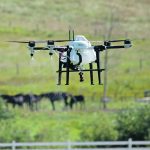
Delays on drone spraying approvals frustrates farmer
At least one farmer is champing at the bit for Canadian regulatory approval of sprayer drones. The Saskatchewan producer, who asked to remain anonymous, uses drones primarily to apply fungicide in pre-harvest grain. Related story: Should farmers use drones to spray? He said he has reached out to the federal Pest Management Regulatory Agency on […] Read more
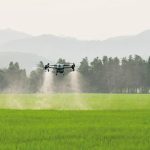
Should farmers use drones to spray?
Producers are eager to adopt DIY aerial spraying, but a slow, careful approach if warranted, says sprayer expert
A number of farmers across Western Canada are using unmanned drones to spray crop protection products, and they’re doing it undeterred by a lack of regulatory approval, say ag drone experts. Markus Weber, president of Alberta-based LandView Drones, sells drones for agricultural applications, including crop spraying. Up until a few years ago, farmers were primarily […] Read more
Bird flu tests do not find virus in Canadian milk
Glacier FarmMedia – It’s so far, so good when it comes to Canada’s milk testing for bird flu because all samples have tested negative so far. The Canadian Food Inspection Agency confirmed May 14 that it had tested 142 retail milk samples from across the country. All were negative for highly pathogenic avian influenza fragments, […] Read more
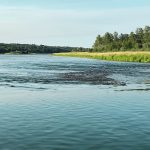
Study shifts water nutrient load responsibility
New U of M research finds that soil and vegetation may play a larger role in excess nutrient runoff than livestock manure
Glacier FarmMedia – A new study spearheaded by two University of Manitoba researchers is giving more insight into where nutrients running off into Prairie waterways are coming from, and pasture manure may not be the biggest culprit. The study, led by soil scientist David Lobb and Marcos Cordeiro of the department of animal science, sought […] Read more
Antibiotic resistance rare in weaned calves
Western Canadian research study finds resistance in only two per cent of the weaned calves that were sampled
Glacier FarmMedia – If a new piece of western Canadian research is any indication, few weaned calves ready for the feedlot are carrying medication-resistant passengers. The project was focused on bacteria and viruses that can contribute to bovine respiratory disease (BRD). It found antimicrobial resistance (AMR) in just two per cent of sampled calves from […] Read more
Researcher builds better canola with broccoli
Glacier FarmMedia – There’s little doubt that canola is a powerhouse crop. Nationwide, it covered nearly 22.1 million acres last year, more than 99 per cent of it on the Prairies. The Canola Council of Canada puts its economic contribution at nearly $30 billion a year. A University of Alberta researcher, backed by the Natural […] Read more
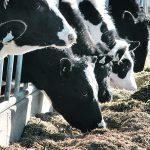
Canada expands avian flu monitoring
Federal government announces new precautions to keep virus out of the country’s dairy herd
Glacier FarmMedia – The federal government and stakeholders are taking new precautions to help prevent the emergence of highly pathogenic avian influenza in Canadian dairy cattle. The government recently announced its intention to expand its avian flu surveillance by: The announcement comes after HPAI fragments were found in U.S. milk April 23. According to the […] Read more
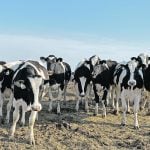
Canada bars gates for untested U.S. dairy cattle
Lactating dairy cattle out of the United States must now test negative for bird flu before crossing the Canadian border
As of May 3, no Canadian dairies or beef herds had sickened with the strain of highly pathogenic avian influenza that has spread to nine states—and there’s hope the U.S. Department of Agriculture’s agreement to test lactating dairy cattle before they enter Canada might help keep it that way. Colorado joined the list of states […] Read more
‘We’ve never seen anything like this before’
Glacier FarmMedia – Veterinarians and food safety officials have been scrambling for about a month to understand the origin and spread of highly pathogenic avian influenza in U.S. dairy herds across several states. Many potential vectors have been considered, from migratory birds, direct cow-to-cow transmission and milking equipment. A University of Guelph veterinary professor has […] Read more





